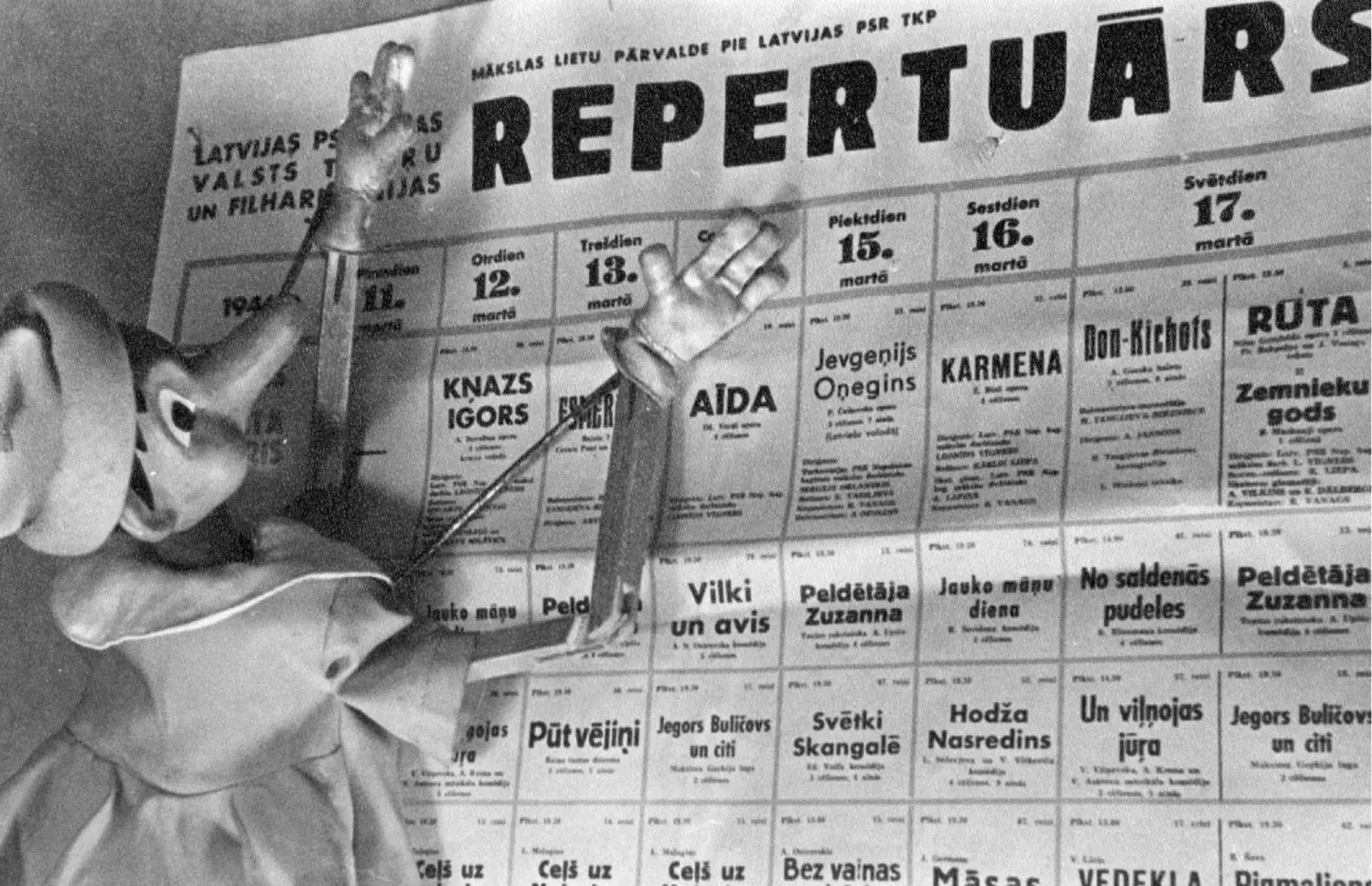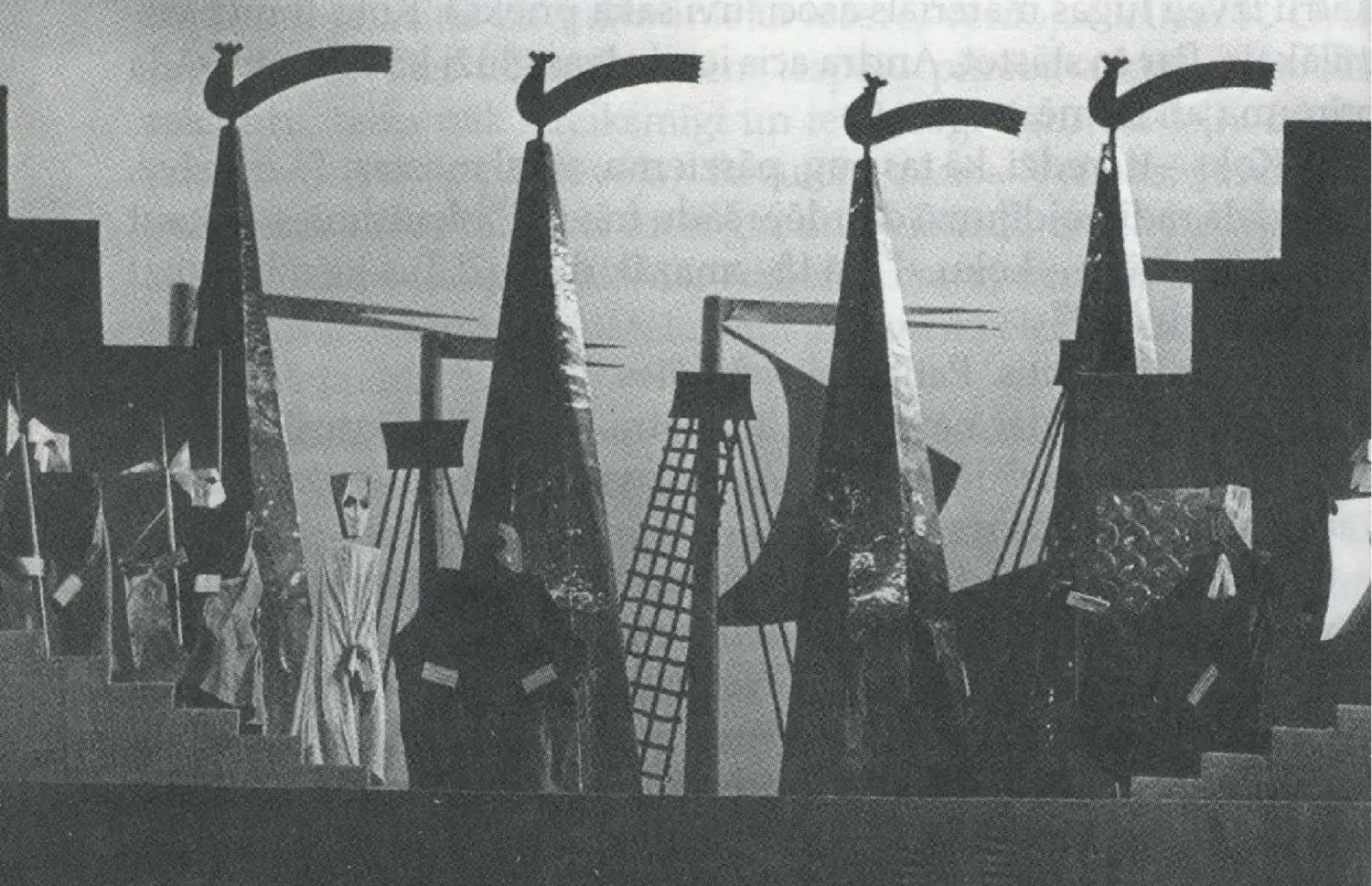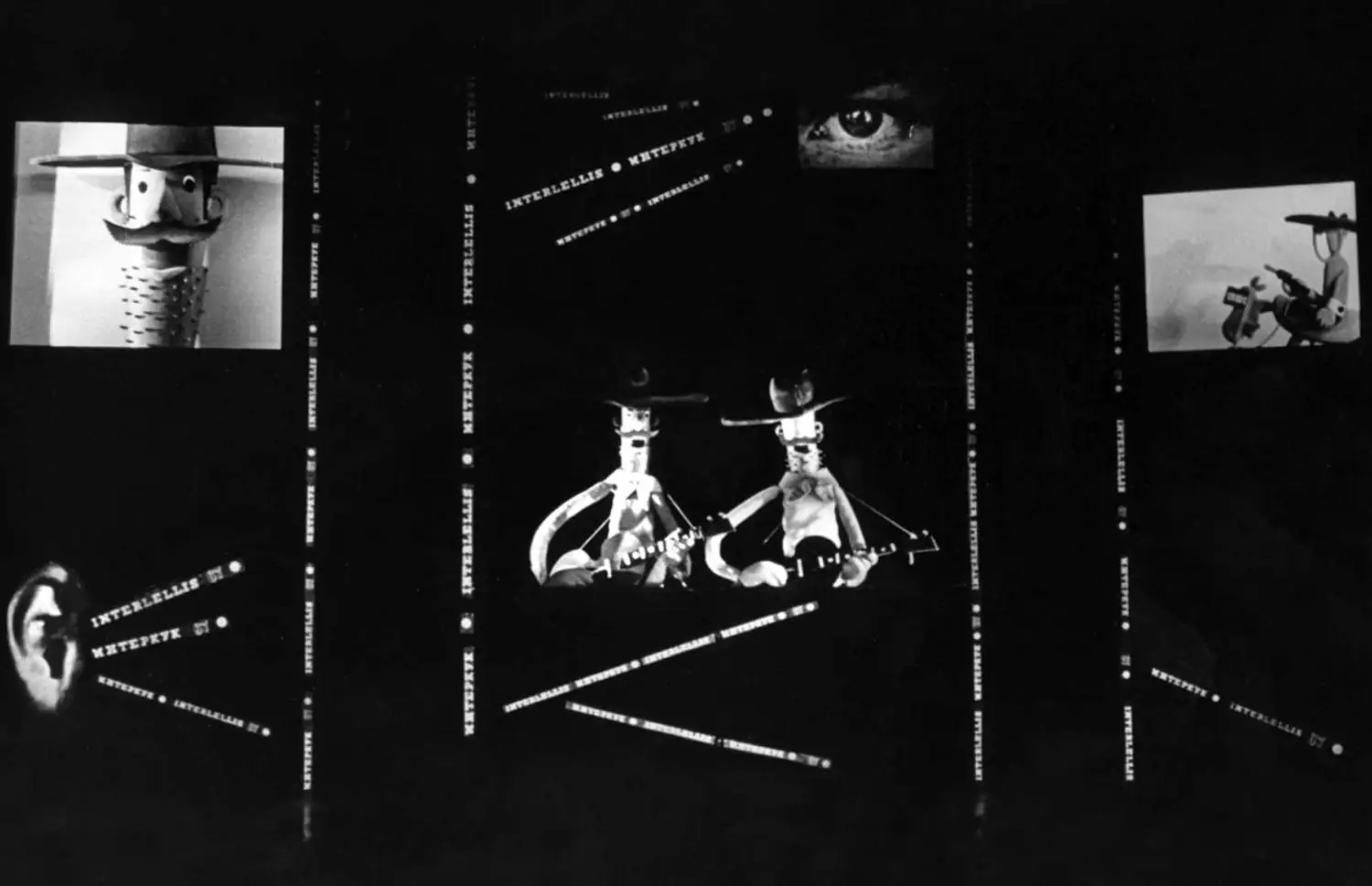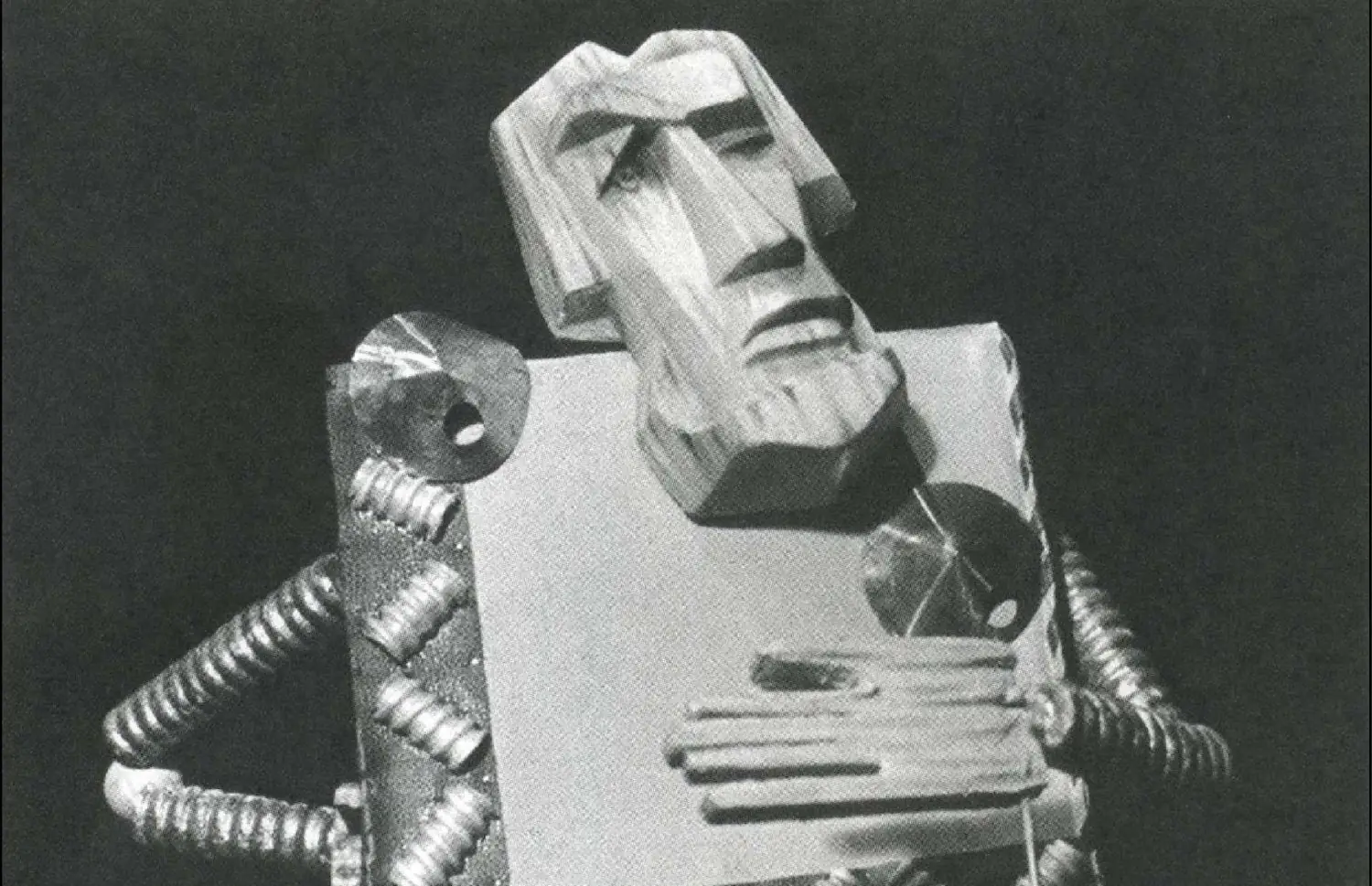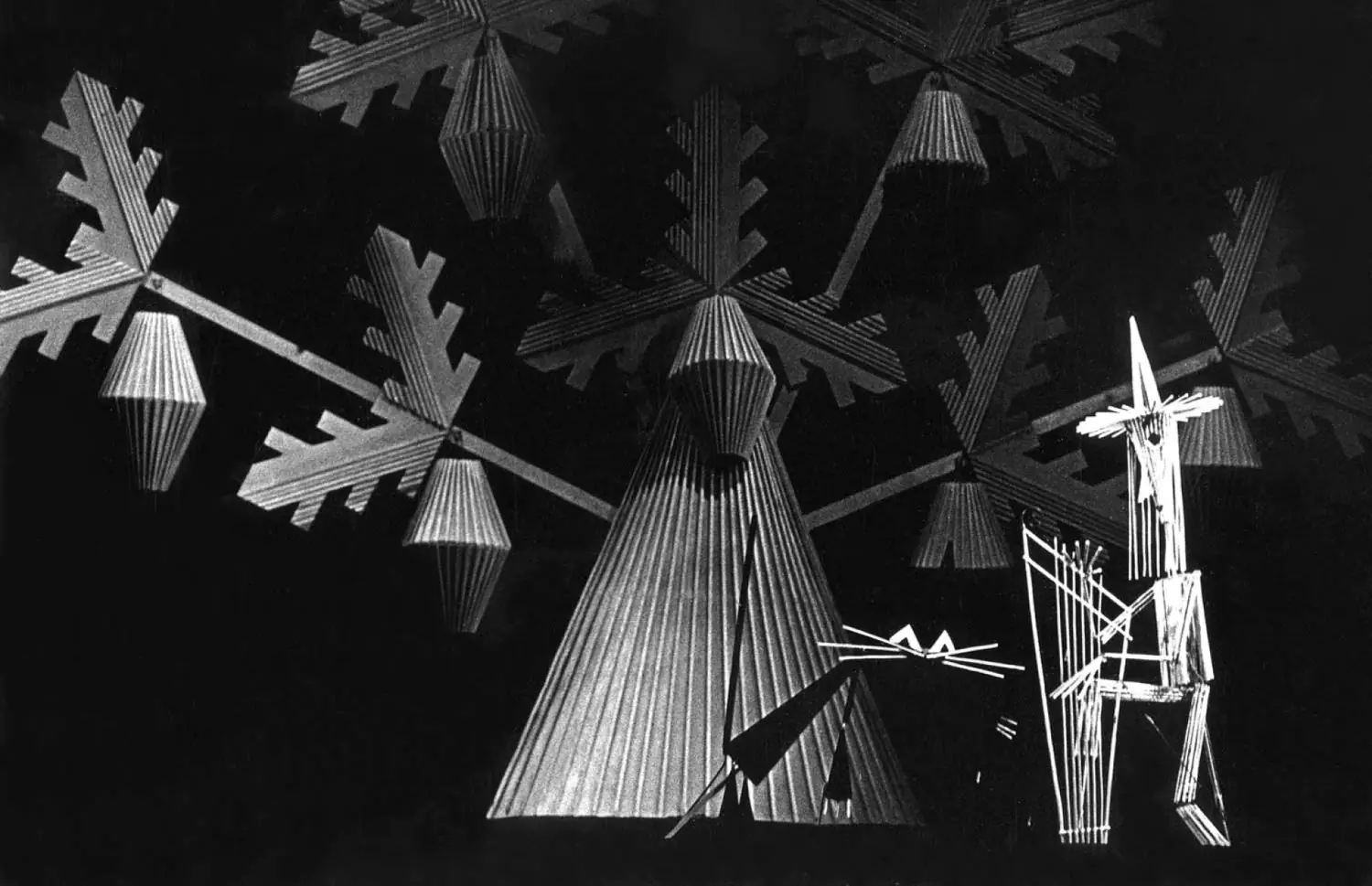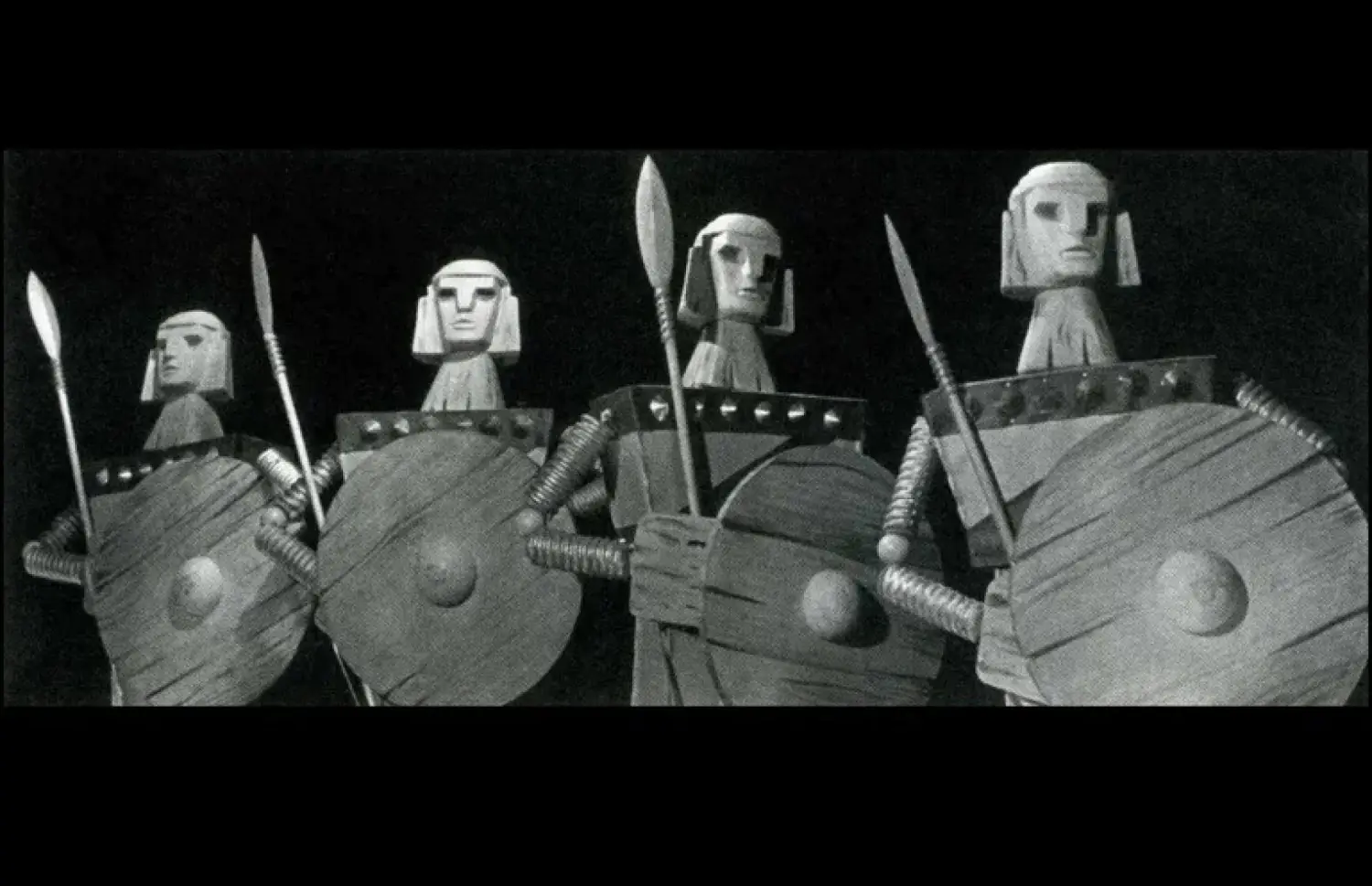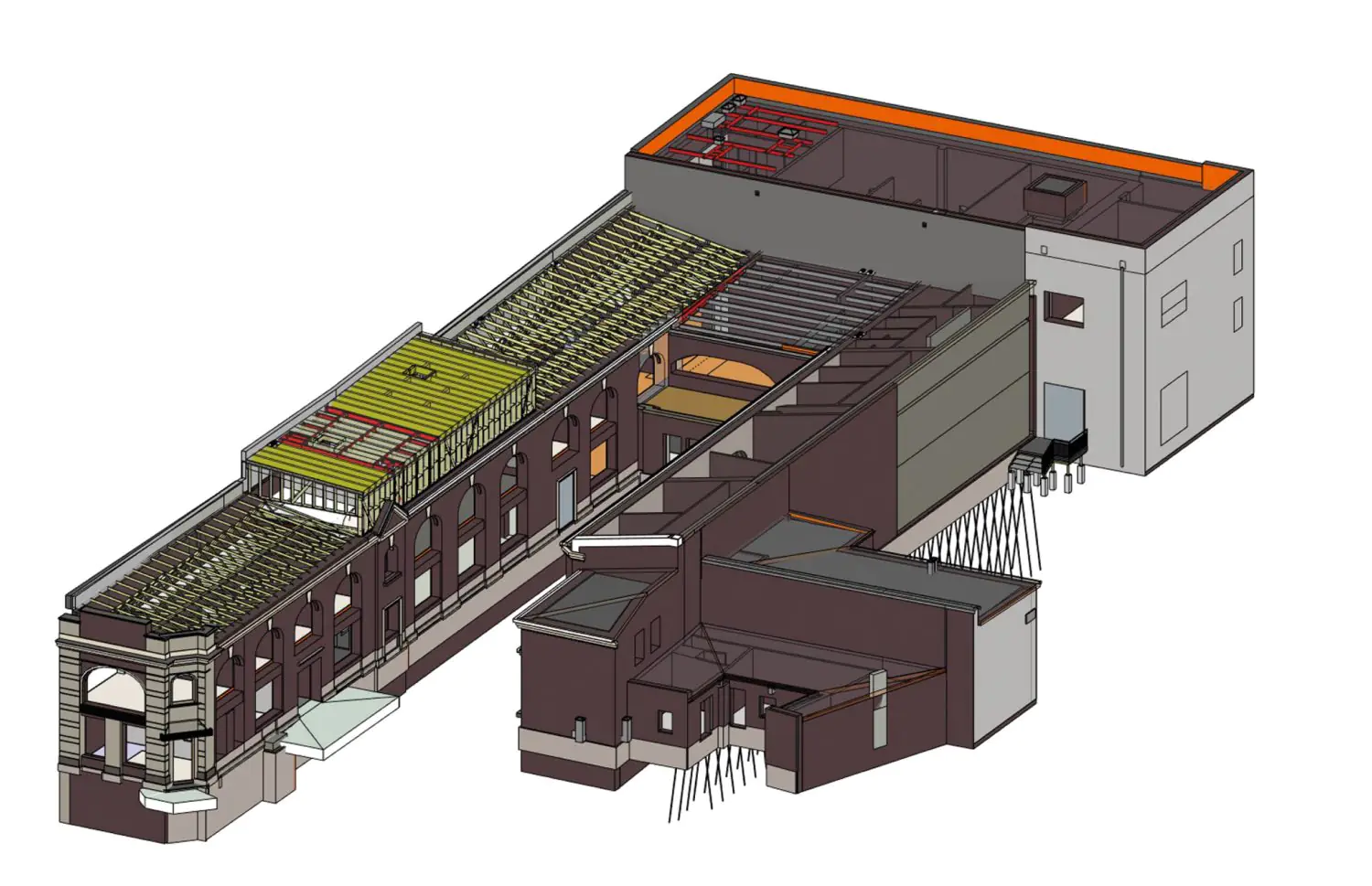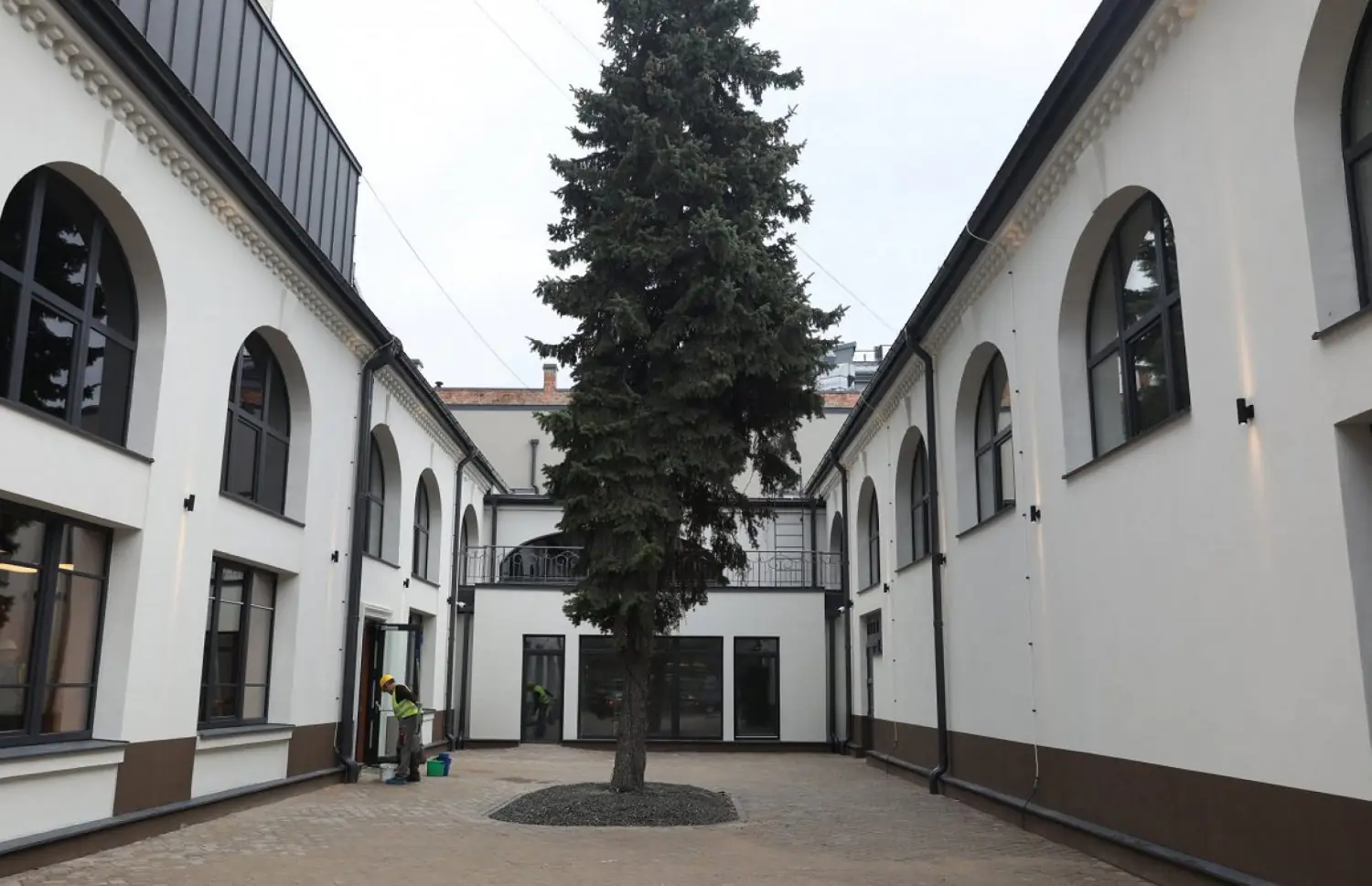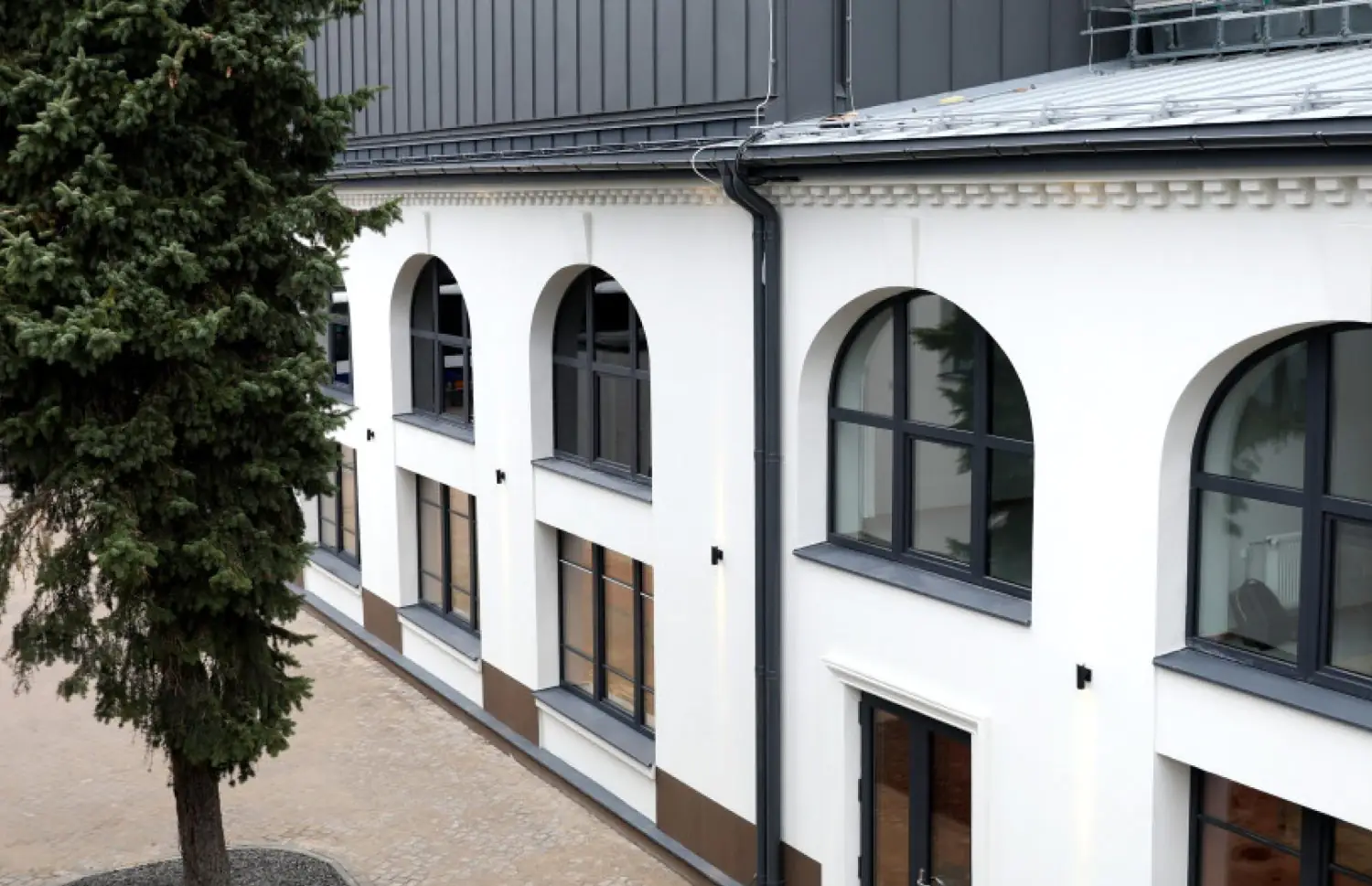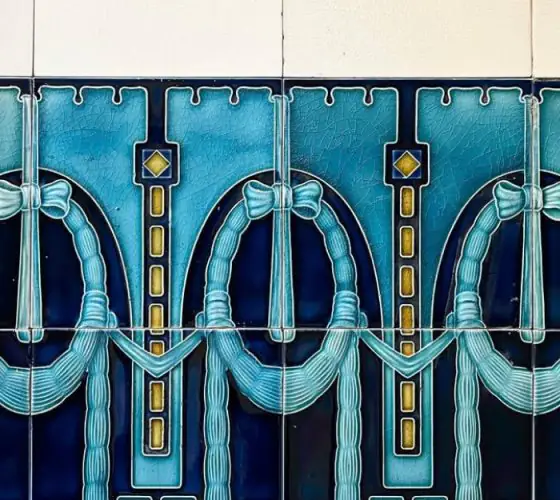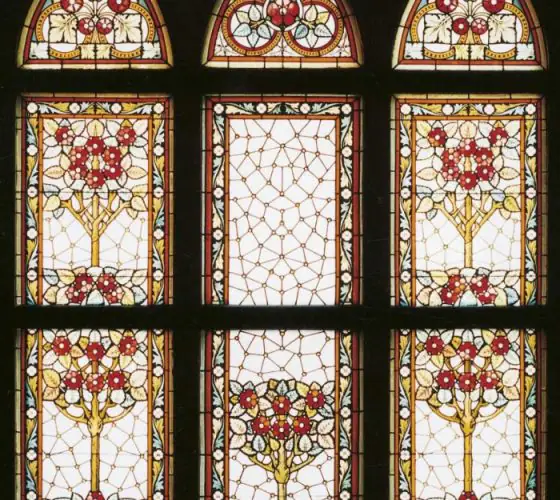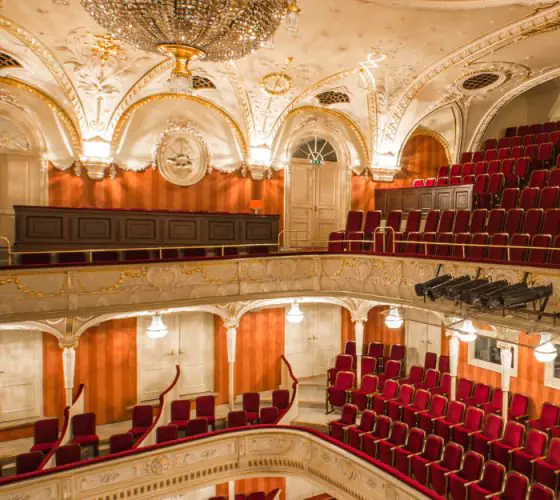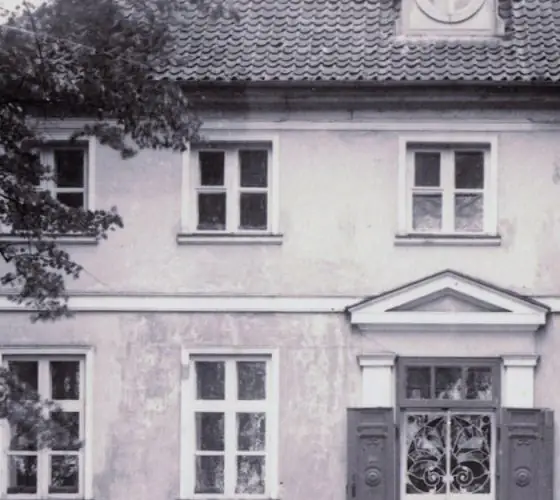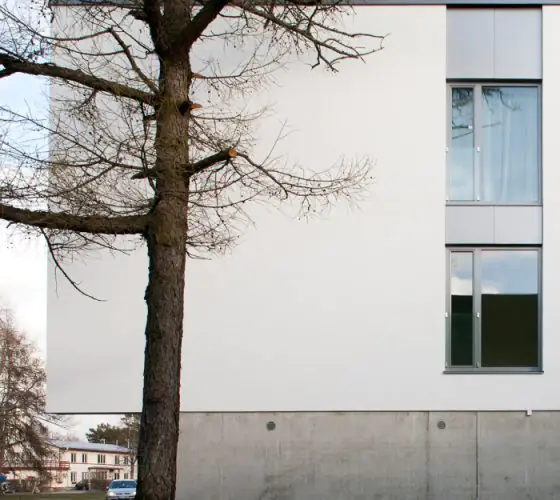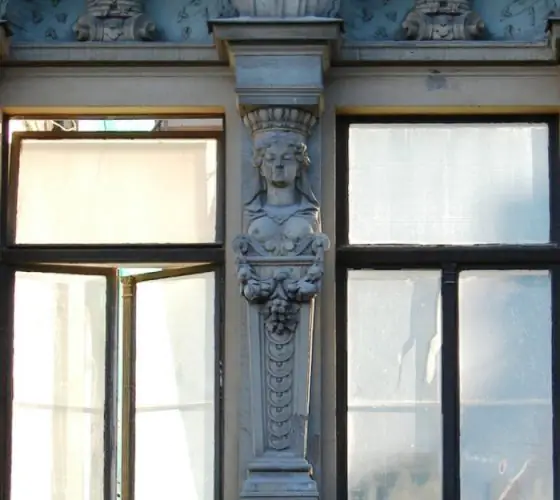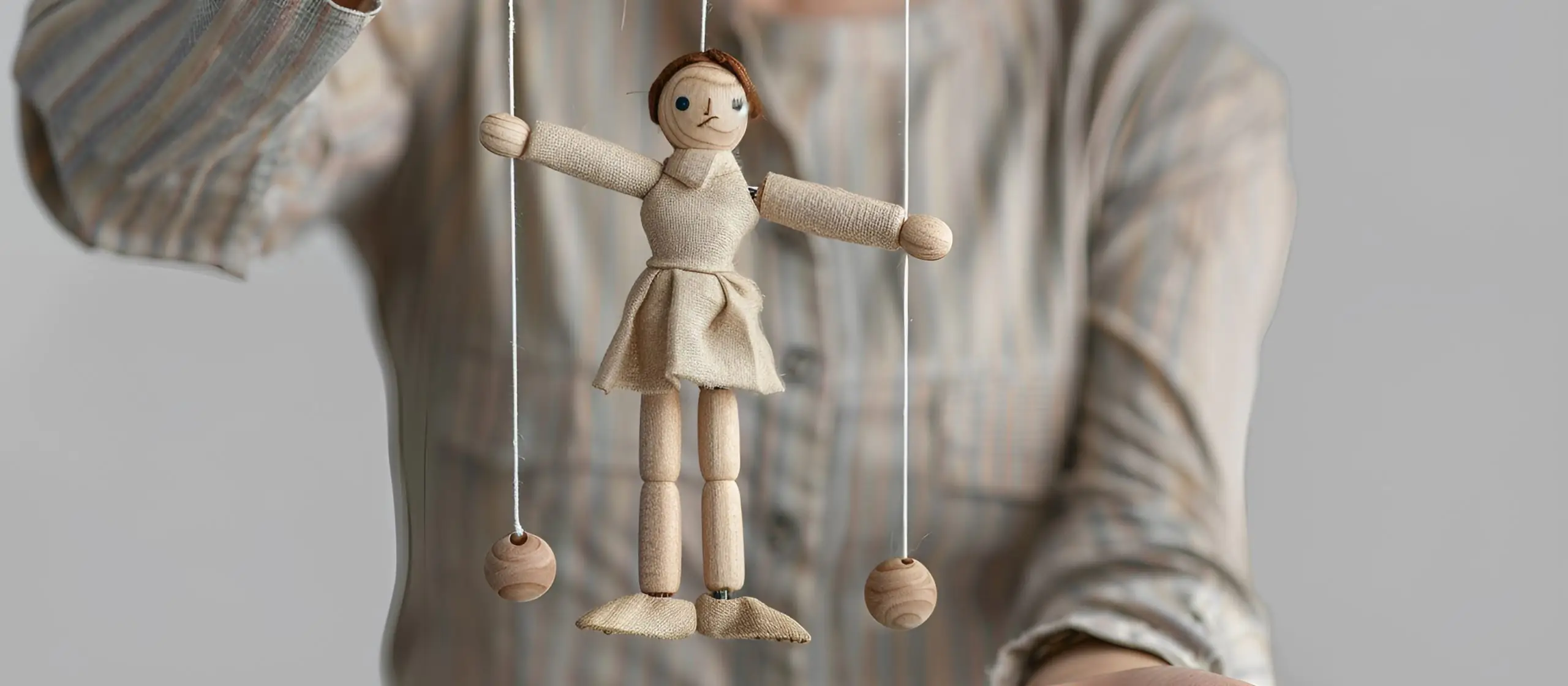
The First Building and Its Functions
The first development project for the site at this address was submitted to the building authorities as early as 1879. The plans included the construction of a carriageway, stables, and a residential building. The proposed building was designed with two floors and a U-shaped layout.
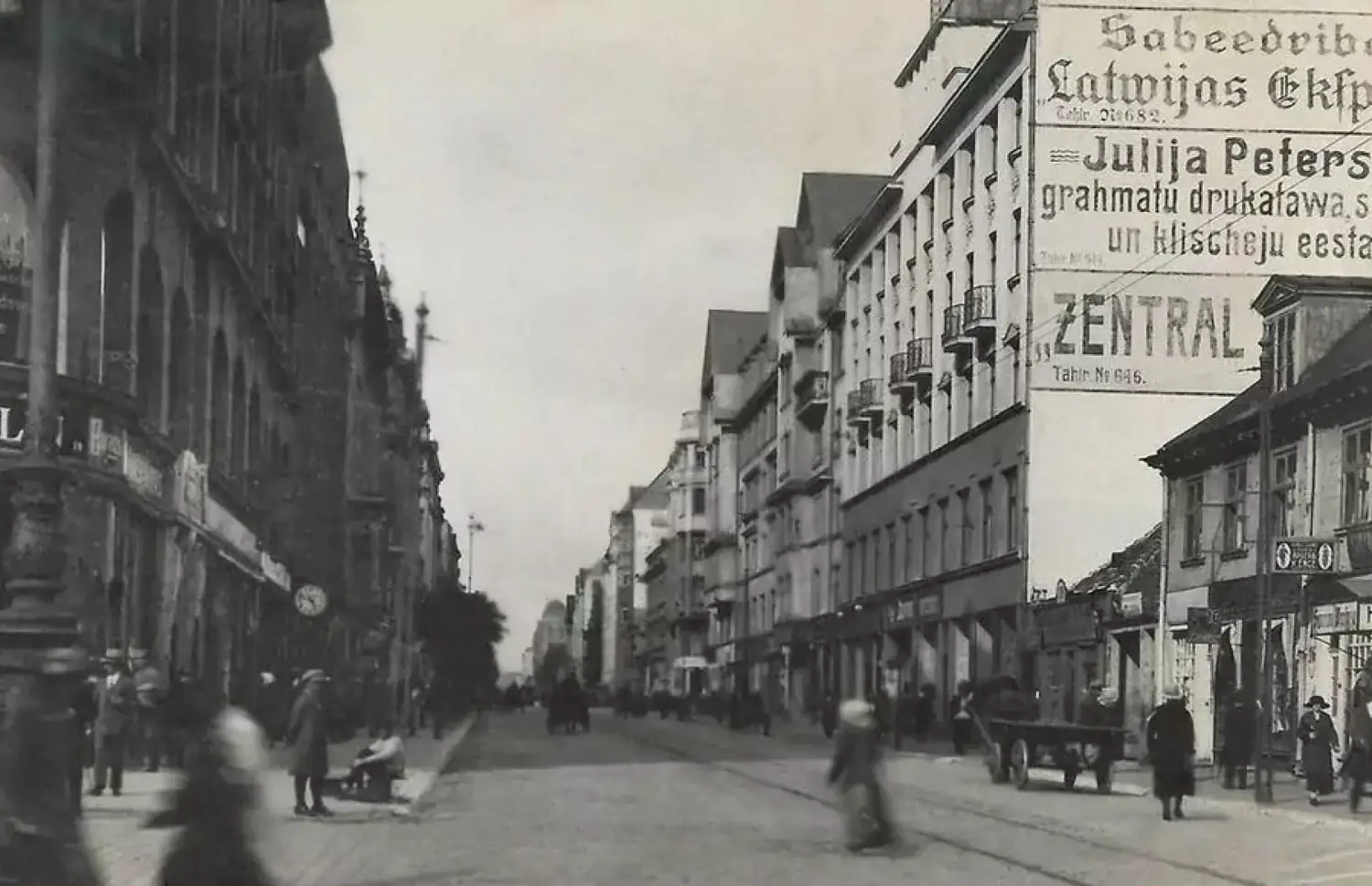
1920s
pastvu.com
In 1911, architect Ernests Pole designed a new Art Nouveau building on the site. Given the similarity to the previous layout, it appears that the structure was not entirely rebuilt but rather renovated. The U-shaped geometry, wall plan, and facade facing Krišjāņa Barona iela were preserved.
The building designed by Ernests Pole was likely completed in 1924. In 1926, plans detailing the functions of the spaces were submitted to the Riga City Construction Office. The building featured a single main hall with a staircase and restrooms. The spaces were primarily used as storage and warehouses. A staircase and terrace were situated in the middle of the building, connecting its two wings.
A Zoo in the Building
In September 1933, the Riga Artists’ Association approached the Riga City Construction Office with a request to house and display animals in the two-story brick building at 16/18 Krišjāņa Barona iela. Permission was granted, and thus, the current puppet theater’s premises once hosted a zoo—specifically, an organization called “Latvia’s Little Zoo – Winter Home for Animals” (“Latvijas mazais zoodārzs – dzīvnieku ziemas mītne”). However, very little information about this zoo has been preserved.
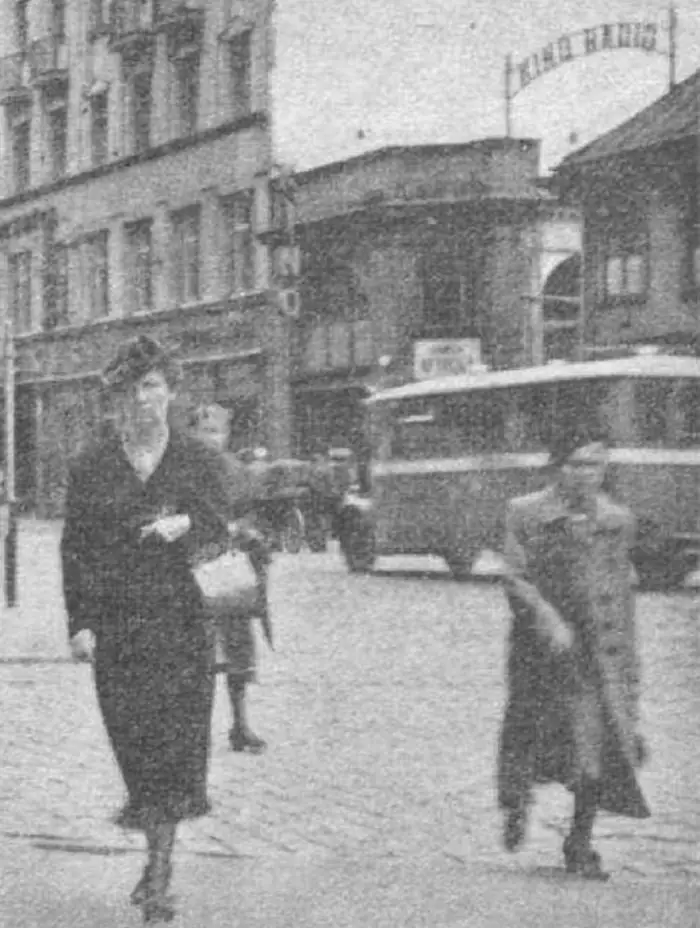
1939
forum.myriga.info
“Radio” cinema
As early as 1932, the end of this U-shaped building became home to the “Radio” cinema, later renamed “Radio-Modern.”
According to a 1937 inventory report, the building at that time did not comply with the approved construction plans. It was equipped with unsafe heating devices, which were placed near unplastered wooden partitions, including in the cinema, creating a significant fire hazard. This prompted a renovation of the building.
By 1937, the building housed not only the cinema but also a variety of workshops and commercial enterprises. Floor plans submitted to the construction office at the time reveal the extensive use of the building. The left wing of the first floor contained a pharmacy, a mechanical workshop, and a residential space with a kitchen.
The second floor was occupied by a cobbler’s workshop, a knitwear factory, warehouses, and apartments. The right wing of the first floor included Motmiller’s sporting goods store, a glass grinding workshop, a printing shop, and two more mechanical workshops. The second floor of the right wing was dedicated to storage, a stamp factory, a weaving factory, as well as leatherworking and mechanical workshops.
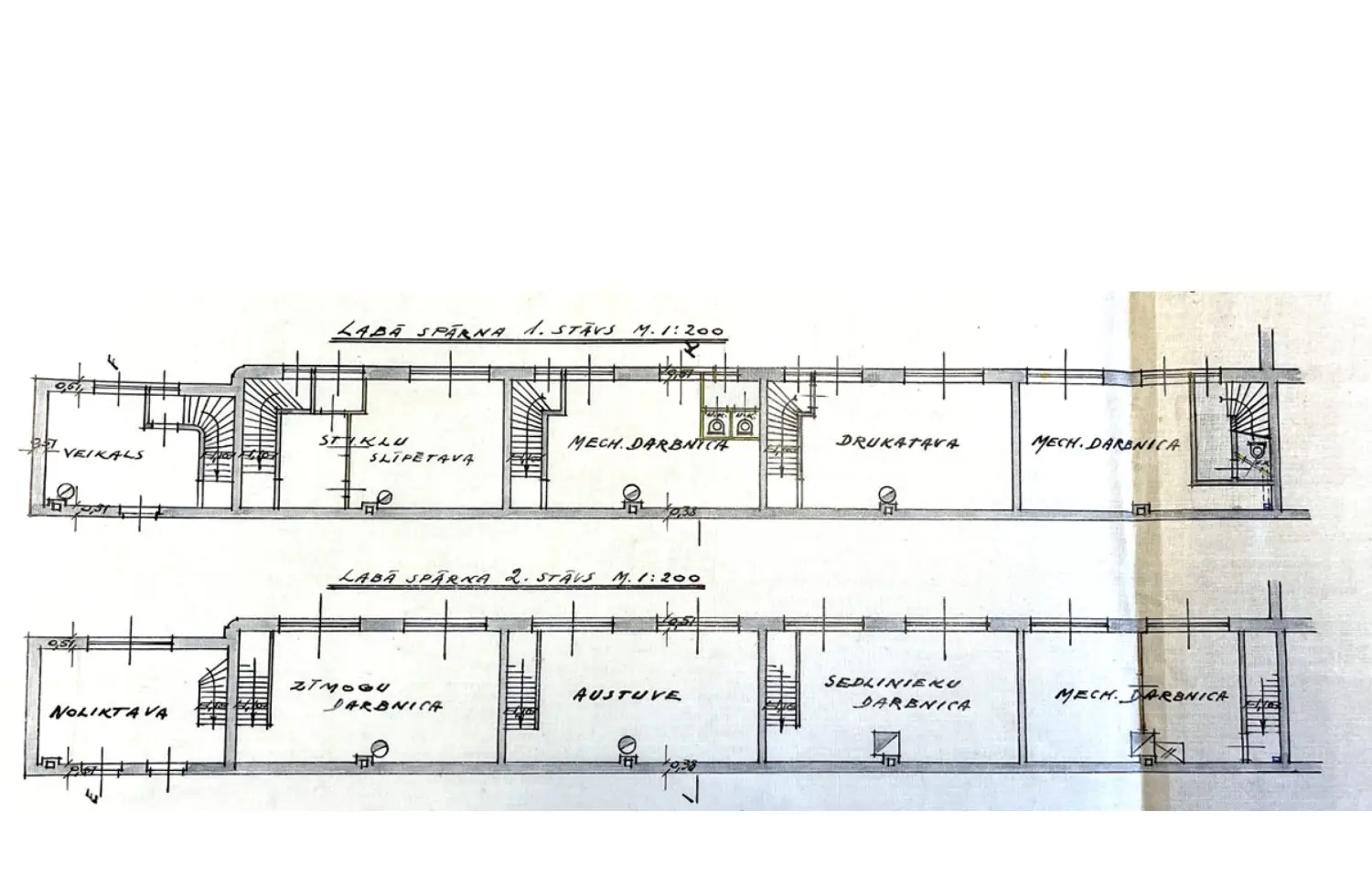
buvinzenierusavieniba.lv
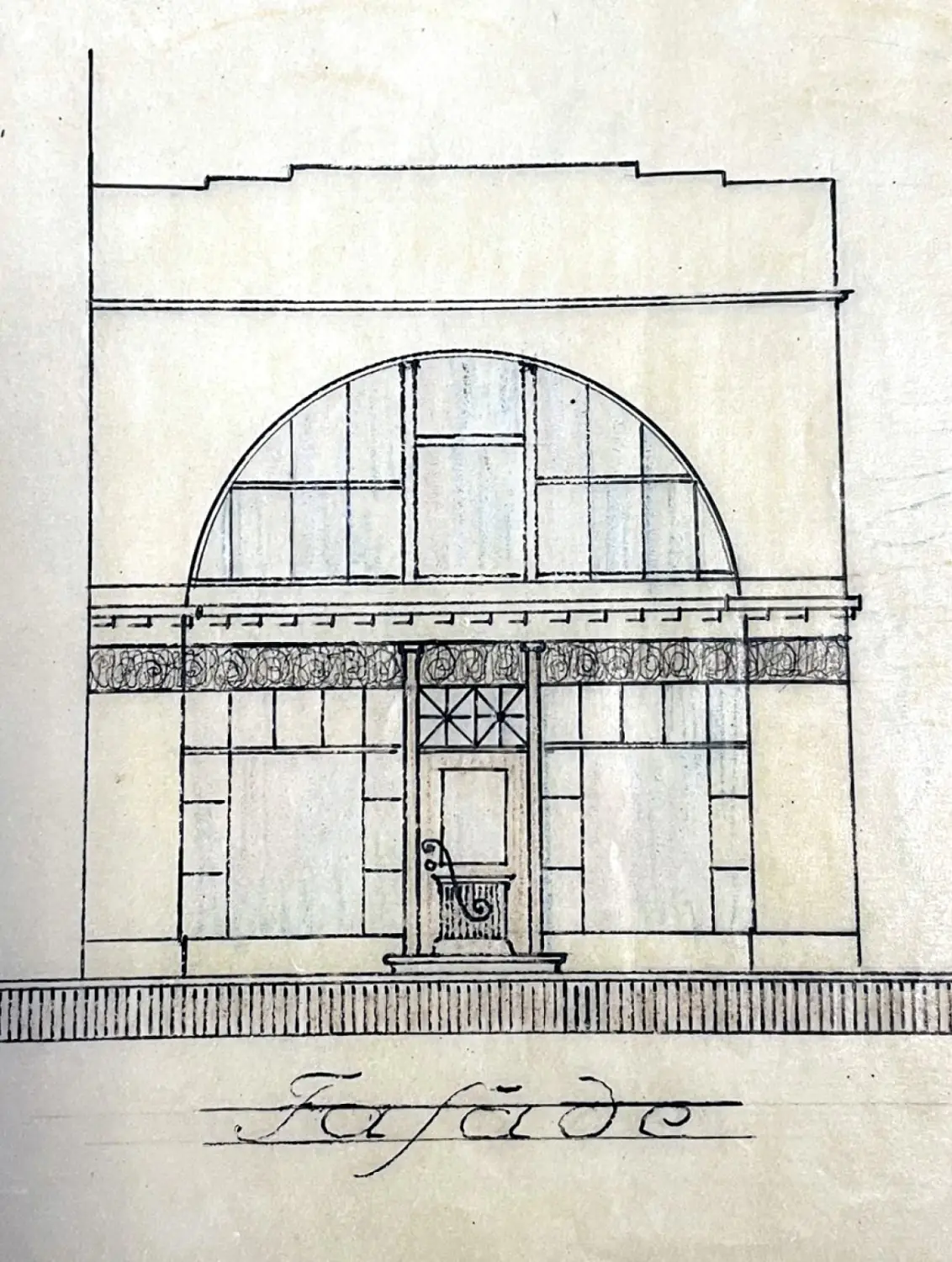
buvinzenierusavieniba.lv
Founding of the Puppet Theater
During World War II, the building at 16/18 Krišjāņa Barona iela entered a new historical era, with roots tracing back to events far beyond Riga. In 1942, in the Russian city of Ivanovo, a puppet theater group was formed within the evacuated State Art Ensemble of the Latvian SSR. This group was led by poet Mirdza Ķempe and writer-translator Jānis Žīgurs, performing for evacuated Latvians and soldiers to uplift their spirits.
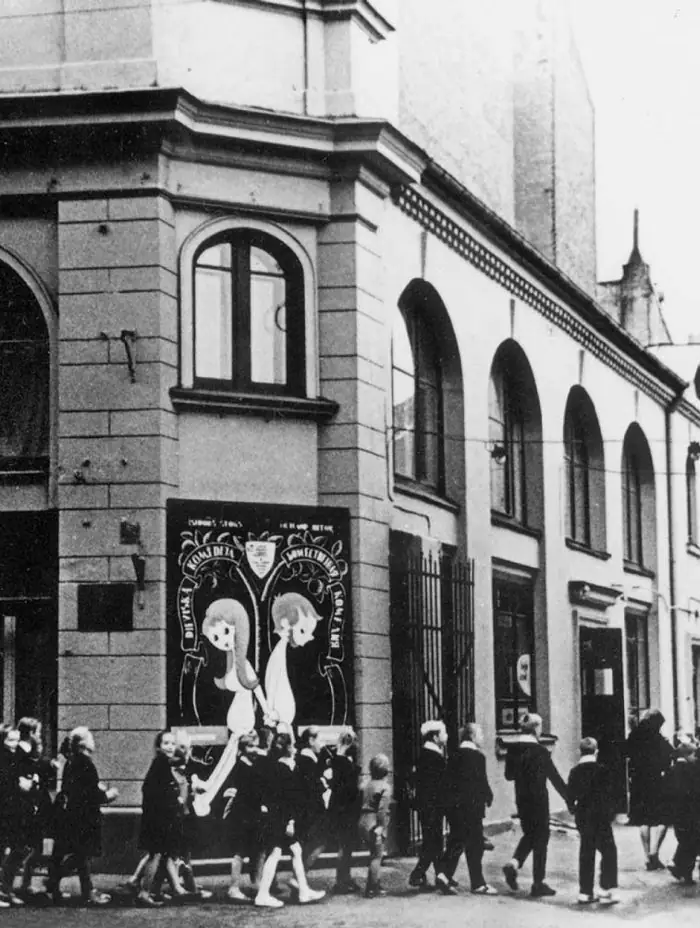
Source: Collection of the Museum of Literature and Music
1960s
enciklopedija.lv
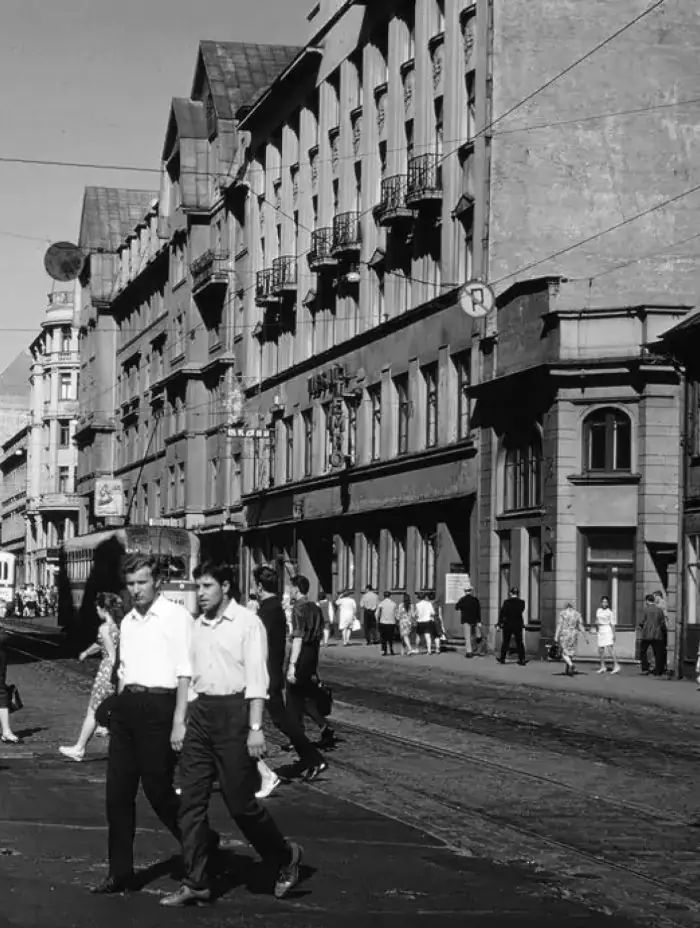
pastvu.com
After returning to Latvia, the group’s first performance took place in 1944 in Daugavpils, on the stage of the local cinema. The very next day, on October 4, 1944, an official decision was made to establish the Puppet Theater of the Latvian SSR. Soon after, the theater moved to Riga, initially settling on Jura Alunāna iela, and later in the former “Aina” cinema on Vaļņu iela. However, the search for a permanent home for the theater continued.
The building at 16/18 Krišjāņa Barona iela was discovered by Arnolds Burovs, the director of the Puppet Theater, who proposed it as the theater’s new home. Thus, the building was transferred to the Latvian Puppet Theater, where it still operates today.
The puppet theater’s auditorium was set up in the former cinema hall. However, the stage depth of the old “Radio-Modern” cinema was insufficient for theatrical performances, so a new stage and orchestra pit were constructed. At the time, the Latvian Puppet Theater was the only one in the world where performances were accompanied by live music.

redzidzirdilatviju.lv
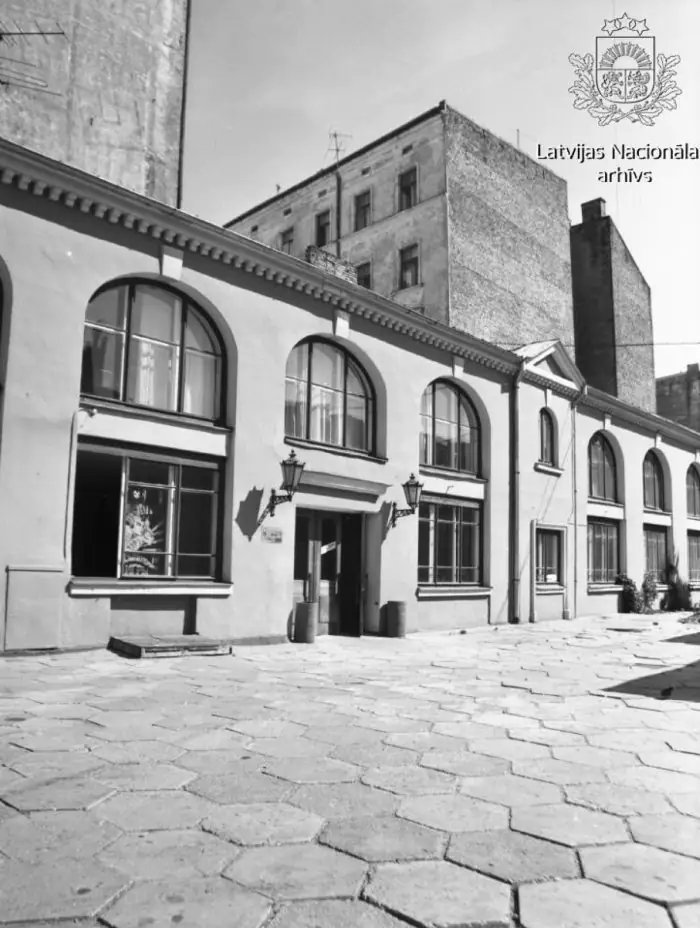
redzidzirdilatviju.lv
According to the theater’s archival records, by 1983 the building’s structural condition had deteriorated to a critical level. However, full-scale repairs did not begin until 1990, forcing the theater to temporarily relocate. Despite the difficult times in Latvia, a major renovation of the building was eventually carried out. The foundation piles were reinforced, and other essential work was completed, allowing the preservation of the historic building and ensuring its continued use.
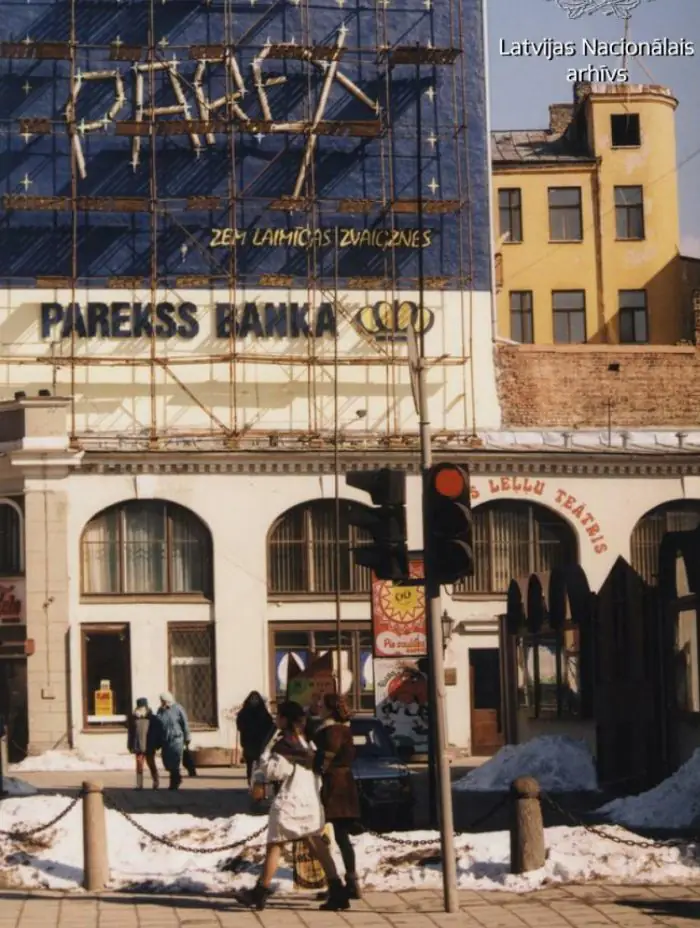
redzidzirdilatviju.lv
Present Day
In 1994, just before celebrating its 50th anniversary, the theater faced an unexpected challenge—a demand to return the building to the heirs of its pre-war owners. Legal battles ensued for several years, but ultimately, the theater prevailed. In 2001, the Puppet Theater officially became the rightful owner of the building.
However, two decades later, the building once again required modernization. In 2021, a new round of renovations began, forcing the Puppet Theater’s creative team to temporarily vacate their historic premises. The recent renovation focused on improving energy efficiency, including the installation of a new ventilation and heating system that will reduce energy consumption by 50%. While the facade was preserved, its color was updated to match the authentic palette uncovered during architectural research.
Additionally, the theater gained new spaces. The former puppet museum has been transformed into a small rehearsal hall for young performers and a venue for children’s performances, where kids can actively participate.
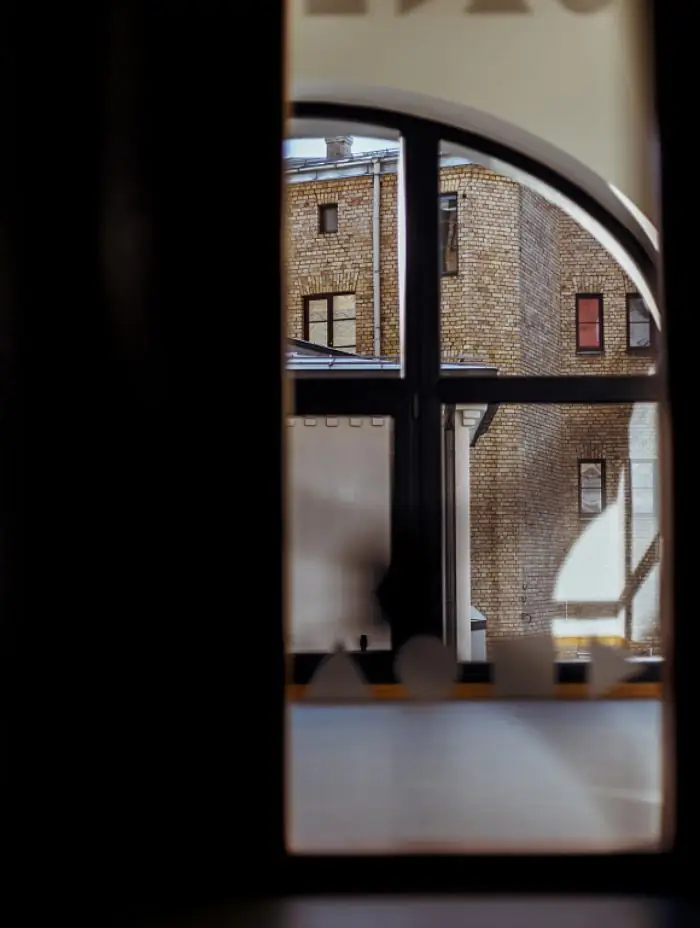
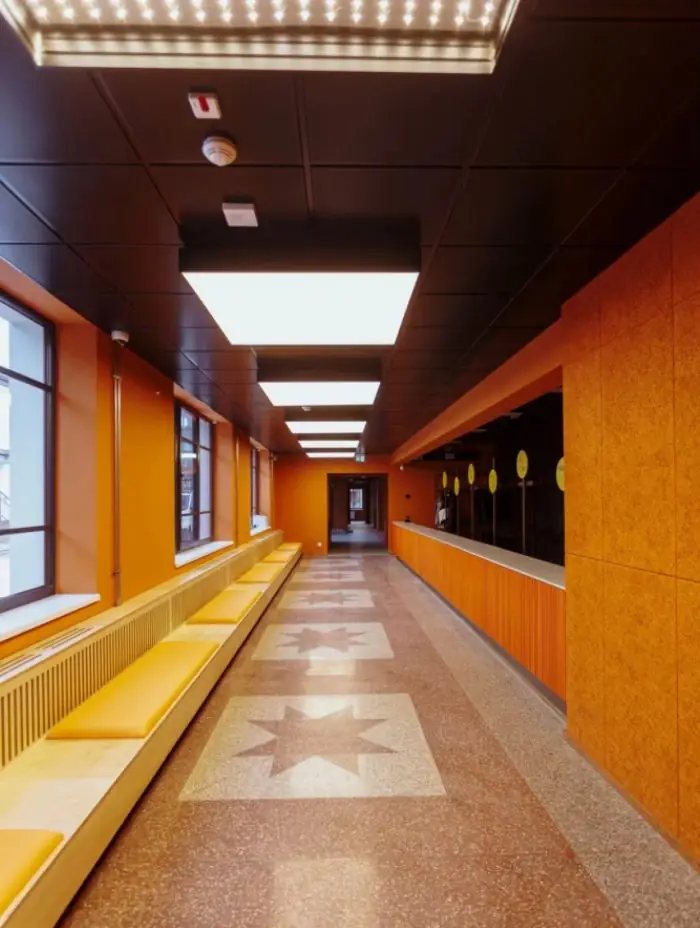
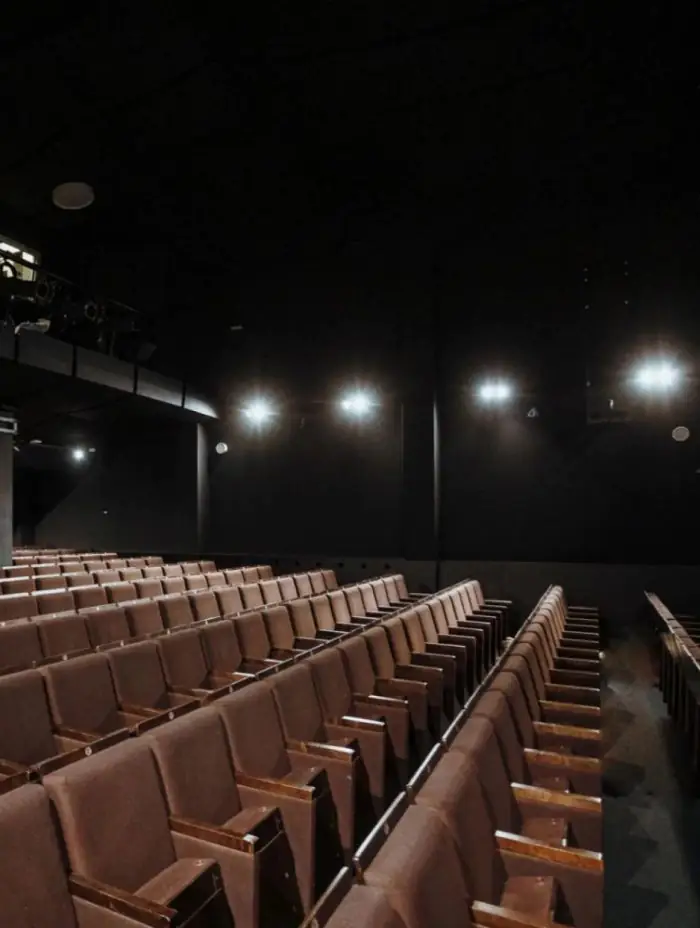
Today, the Latvian Puppet Theater building at 16/18 Krišjāņa Barona iela is part of the UNESCO World Heritage Site “Historic Centre of Riga” and stands as an important cultural and historical landmark.


